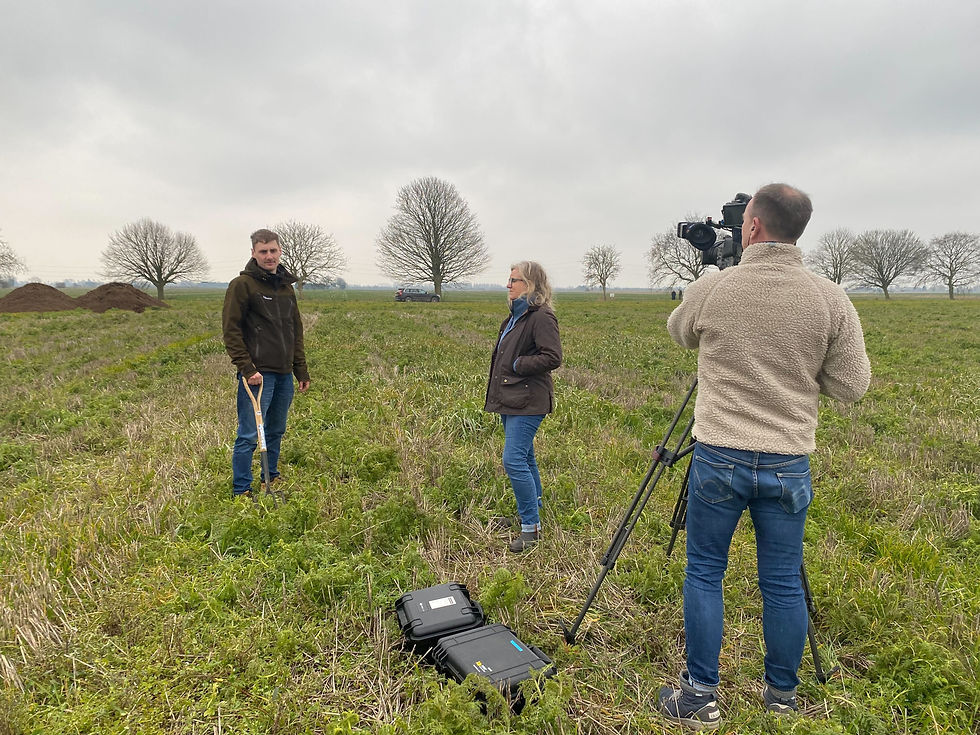The Vital Role of Soil: Supporting Life and Sustaining Our Planet
- Thomas Gent

- Jun 16, 2024
- 3 min read
Soil, often perceived as mere dirt under our feet, is a fundamental component of Earth's ecosystem. This thin layer of organic and inorganic material on the Earth's surface is the bedrock of all terrestrial life, playing a critical role in supporting plant growth, regulating water cycles, and housing a plethora of organisms. Without healthy soil, life as we know it would not be sustainable.
The Marvels of Soil

1. A Living Entity: Soil is teeming with life. A single tablespoon of healthy soil contains more microorganisms than there are people on Earth. These microorganisms, including bacteria, fungi, and protozoa, form a complex food web that decomposes organic matter, recycles nutrients, and enhances soil structure.
2. Nutrient Cycling: Soil acts as a natural recycling system, breaking down organic matter into essential nutrients that plants need to grow. This process, known as nutrient cycling, involves various soil organisms that decompose dead plants and animals, releasing nutrients like nitrogen, phosphorus, and potassium back into the soil.
3. Water Filtration and Storage: Soil filters and stores water, playing a crucial role in the hydro logical cycle. It absorbs rainfall, reducing runoff and erosion, and slowly releases it into plants and groundwater systems. This natural filtration process helps to purify water, making it safe for drinking and other uses.
4. Climate Regulation: Soil is a major carbon sink, sequestering carbon dioxide from the atmosphere and helping to mitigate climate change. Plants absorb CO2 during photosynthesis, and when they die, the carbon they contain is incorporated into the soil. Healthy soils with high organic content can store significant amounts of carbon for long periods.
Regenerative Farming: Healing the Soil
Modern agricultural practices, particularly those that involve heavy use of synthetic fertilisers and pesticides, mono cropping, and intensive tillage, have led to widespread soil degradation. However, regenerative farming practices offer a promising solution to restore soil health and enhance its ability to support life.

1. Cover Cropping: Cover crops, such as clover, rye, and legumes, are planted during off-seasons when main crops are not growing. These plants protect the soil from erosion, improve soil structure, enhance nutrient cycling, and suppress weeds. Cover cropping can significantly boost soil organic matter and biodiversity.
2. No-Till Farming: No-till farming minimises soil disturbance, preserving soil structure and moisture. By avoiding ploughing, farmers can reduce erosion, increase water infiltration, and promote a healthy soil ecosystem. This practice also helps to sequester carbon in the soil, contributing to climate change mitigation.
3. Crop Rotation: Rotating different crops in a systematic sequence prevents the depletion of specific nutrients and disrupts pest and disease cycles. Diverse plantings improve soil fertility and structure, reducing the need for chemical inputs and fostering a more resilient agricultural system.
4. Composting and Organic Amendments: Incorporating compost and other organic materials into the soil boosts its organic matter content, enhances nutrient availability, and supports a thriving microbial community. Composting recycles organic waste, reducing landfill use and greenhouse gas emissions.
The Promise of Gentle Farming
Gentle Farming, an approach that integrates various regenerative practices, aims to create a harmonious relationship between agriculture and nature. By prioritising soil health, biodiversity, and ecosystem services, Gentle Farming promotes sustainable food production and environmental stewardship.
1. Enhancing Biodiversity: Gentle Farming encourages the preservation and enhancement of natural habitats within and around farmland. This includes maintaining hedgerows, planting native trees, and creating wildlife corridors. Enhanced biodiversity improves pollination, pest control, and overall ecosystem resilience.
2. Reducing Chemical Dependence: By fostering healthy soils and robust ecosystems, Gentle Farming reduces the need for synthetic fertilisers and pesticides. Natural pest predators, diverse crop rotations, and nutrient-rich soils decrease reliance on chemical inputs, leading to safer food and a healthier environment.
3. Empowering Farmers: Gentle Farming supports farmer education and community involvement. By sharing knowledge and resources, farmers can adopt regenerative practices that improve their livelihoods and contribute to local food security. This collaborative approach strengthens rural communities and promotes sustainable development.
Conclusion
Healthy soil is the foundation of life on Earth, supporting plant growth, regulating water cycles, and hosting diverse organisms. Regenerative farming practices, including cover cropping, no-till farming, crop rotation, and composting, offer effective ways to restore and maintain soil health. Gentle Farming, with its holistic approach to agriculture, enhances biodiversity, reduces chemical use, and empowers farmers, ensuring a sustainable and prosperous future. By valuing and nurturing our soils, we can create a resilient food system that feeds people while protecting our planet.







Comments